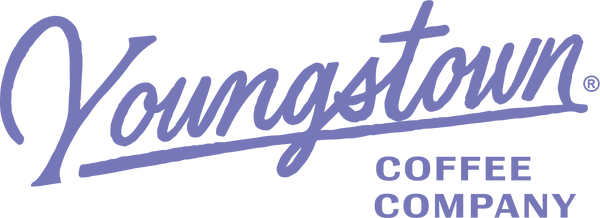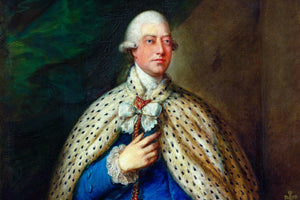The year is 2022. Students don’t use cursive. There’s a calculator in our pocket at all times. We can travel thousands of miles a day via airplane. We’re all entwined in a social web, weaved by the internet, accessing global information at a pace far faster than our monkey brains are designed to process. Taco Bell sells chicken wings. Life imitates memes, and this life is fast-paced. Faster than our ancestors, faster than our grandparents. We tend to take the little things for granted.
As I drink my morning cup of coffee, I do my best to slow my thoughts and remember, aside from political strife, the global pandemic, our planet heating up at unprecedented levels, and paying more taxes than Elon Musk: I’m doing just fine. Right now, I’m drinking a hot cup of Brazilian Dulce and listening to Mac Miller. Life is great when you focus on the isolated moments. Is it a case of positive thinking, or the coffee that puts things into perspective? Hard to say, probably a little of both.
As Jim Hopper of Stranger Things so eloquently put it “Mornings are for coffee and contemplation.” Has it always been this way? Has coffee always been this therapeutic to our daily ritual? In short, as far as we can look back into recorded history, yes. TL;DR- We’ve enjoyed coffee for a really really long time, in one capacity or another. Sometimes for good, sometimes for evil.
According to legend, the ancestors of today’s Kaffa people in Ethiopia were the first to recognize the energizing effects of coffee during the 9th century when a man named Kaldi noticed his goats weren’t as grumpy in the morning after munching on coffee plants for breakfast, but we don’t really know for sure. The earliest we can definitively trace back coffee consumption was the 15th century in Yemen. (I bet the ashes of The Library of Alexandria beg to differ, but I’m doing my best not to stray too far away from our topic. Damn you, Julius Caesar.) Anyway, it slowly started to spread through the Islamic world in the 16th century where it was widely recorded that the Muslim community would use coffee as an aid for lengthy prayer sessions. Coffee certainly assisted Fajr, the pre-dawn Muslim prayer, in terms of contemplation.
Up until this point, coffee cultivation was exclusive to Arabia and Africa. They knew they had a hot commodity cornered and wanted to keep it that way, so the farmers would parch and boil the beans rendering them infertile. Until Baba Budan, an Indian Pilgrim, left Mocha, Yemen with fertile beans in his Jansport fanny pack. My boy Baba introduced the entire country of India to coffee cultivation, and by proxy, all of Europe.
Chikamagalur, other than being a mouthful to the uncultured, was a small hill town where Baba planted his stolen beans, establishing Chikamagalur as the first recorded location of coffee cultivation in India. Surprisingly so, “coffee culture” in India doesn’t really start here. It’s still a relatively new frontier, as more and more young adults prefer to head to their local coffee shop to congregate with the homies. Better late than never.
Now, if our story ended here, Baba Budan would have probably gone down in history as the Robin Hood of Coffee Cultivation. Steal from the rich, give to the common folk. Alas, the English love taking things that aren’t theirs, so our story continues.
Fast forward to the year 1600. The East India Trading Company was formed to exploit trade with East & Southeast Asia as well as India. We don’t have time in this blog to fully delve into The East India Trading Company’s infamous reputation, but in short, they were imperialist dirtbags that stuck their noses in places they shouldn’t have, pulled political strings to meet their agendas, used slave labor, and a bunch of other dreadfully immoral things.
The colonizing bad-guy trading company started to cultivate coffee for commercial trade in the Java (pronounced Jawa) region of Indonesia.(We have Indonesian Java available on our website, and it just so happens to be the owner’s favorite single origin!) Not long after, coffee shops and European coffee culture as we know it started in the Netherlands. Koffie quickly became a social beverage to the Dutch and has remained so to this day. What’s interesting is they don’t really fuss with the artisanal side of coffee culture. They like to keep it simple. It’s probably safe to say they aren’t dosing their coffee with massive amounts of mind benders like their fun northern neighbors, Amsterdam. Different strokes for different folks, I guess.
The first coffeehouse in England opened in Oxford in 1652, and it took no time for other coffee establishments to spread in all directions. Although recorded accounts say that the coffee served during this period was “disgusting and bitter”, everyone couldn’t get enough of the caffeine buzz. Coffeehouses became the place to go to conduct business, gossip, meet classmates, exchange ideas, and debate local news and politics.
These conversations that led to debates regarding science, literature, art, poetry, and religion became so frequent that coffeehouses in London were known as ‘penny universities’ as the price of a cup of coffee was, you guessed it, a penny. Not every coffeehouse was as distinguished as the ‘penny universities’ though. Some were local meeting places of criminals, riffraff, and pimps. Everyone knows a fresh cup of joe keeps the pimp hand strong.
Unlike public houses of that time, no alcohol was served, and no women allowed. I’d like to think every coffeehouse had a crudely drawn “no girls allowed” sign posted on their front door. In the end, the joke is on these long-dead business owners. Today, women account for 46% of coffee drinkers in the UK. So, y’all played yourself out of about half of your potential customers.
Excluding women, anyone of any social class could visit a penny university, which became associated with equality. King Charles was not happy about that, and banned coffee in 1675 which resulted in public outcry until it was lifted. Whoever says whining about things enough can’t bring about social change is wrong.
It didn’t take long for coffee and its subsequent culture to creep its way over to the United States, but in The US, coffee wasn’t just a delicious cup of hot stimulating bean juice that provoked meaningful conversation, it was a statement. It was telling The British and its rule to kindly piss off, and take their tea with them. We were sticking it to the Redcoats, one cup of joe at a time. Unfortunately they didn’t get the message until we slaughtered 25,000 British soldiers. Get wrecked, King George III. We won. ‘Murica.
Fast forward again, to the end of WWI. Europe continued to feel the economic quake of war far after the last shot was fired, affecting coffee trade, amongst other goods, worldwide. The US filled that void, becoming the world's new largest coffee investor, purchaser, and consumer. By 1922, America had become ‘the chief coffee consumer of the world’ drinking more than half of the world’s coffee.
And here we are today. Drinking our coffee, with the majority of people clueless of it’s checkered history and wild turns, just for you to scream at a teenager working drive-thru at Starbucks because they didn’t give you 4 pumps of frappe-nilla hazelnut cinnamon bing bong. I had every intention of ending this blog post leaving you feeling warm and fuzzy, telling you that coffee is inclusive and you shouldn’t feel bad however you enjoy it. As long as you truly are enjoying the experience, you’re doing it right, even if you use, dare I say it….K Cups.
While that still holds true, it’s definitely not the major take away from a review of the history of coffee. And to be honest, I’m being pulled in so many different directions I think I’ll just end this with a list.
1.Slavery is bad.
2.Baba Budan was a pilgrim and a thief and that just doesn’t add up.
3.Women deserve to drink coffee.
4.Amsterdam is the cool older brother of the Netherlands because they put drugs in their coffee.
5.Being pretentious in a coffeehouse is actually keeping true to the origins of penny universities.
6.Drinking coffee in America is patriotic.
7.Respect your baristas, Karen.
Until next time,
Tim Phares
Sources:
-https://www.pbs.org/food/the-history-kitchen/history-coffee/
-https://www.ncausa.org/about-coffee/history-of-coffee
-https://www.digitalinformationworld.com/2019/01/the-evolution-of-coffee-culture.html
-https://humwp.ucsc.edu/cwh/brooks/coffee-site/1400-1800.html
-http://www.talktoislam.com/605/what-times-do-muslims-pray
-https://www.britannica.com/topic/East-India-Company
-https://www.beanpoet.com/netherlands-coffee-culture/
-https://www.historic-uk.com/CultureUK/English-Coffeehouses-Penny-Universities/
-https://blog.publicgoods.com/a-brief-history-of-coffee-in-america/

